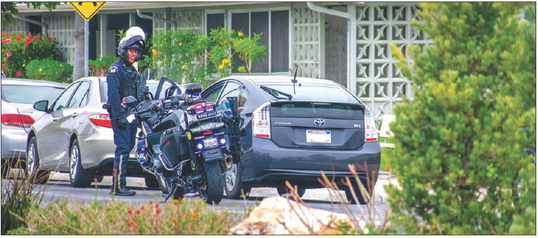All About California Prop 15
California Proposition 15, the Tax on Commercial and Industrial Properties for Education and Local Government Funding Initiative, is on the Nov. 3 ballot in California as an initiated constitutional amendment.
A “yes” vote supports this constitutional amendment to require commercial and industrial properties, except those zoned as commercial agriculture, to be taxed based on their market value, rather than their purchase price.
A “no” vote opposes this constitutional amendment, thus continuing to tax commercial and industrial properties based on a property's purchase price, with annual increases equal to the rate of inflation or 2 percent, whichever is lower.
Opponents say this ballot initiative is of interest to residents because Proposition 13, California’s long-standing property tax law, is at risk of being partially unraveled, and along with it, property owners would incur a substantial increase in property taxes.
Split-roll Initiative On May 29, the initiative, which is being called the “splitroll” initiative, passed its last barrier to appear on the ballot this November. If successful, this new initiative would change how California assesses property taxes on certain commercial properties.
The ballot initiative would amend the California State Constitution to require commercial and industrial properties, except those zoned as commercial agriculture, to be taxed based on their market value. In California, the proposal to assess taxes on commercial and industrial properties at market value, while continuing to assess taxes on residential properties based on the purchase price, is known as split roll. The change from the purchase price to market value would be phased-in beginning in fiscal year 2022-2023. Properties, such as retail centers, whose occupants are 50 percent or more small businesses would be taxed based on market value beginning in fiscal year 2025-2026 (or at a later date that the legislature decides on).
In 1978, California passed Proposition 13 tax reform that froze property taxes at the 1976 assessed value. The law limits when the state can reassess properties to increase its property taxes. Reassessments are allowed only when the property is transferred to a new owner or undergoes development, and reassessment is limited to 1 percent of the sale price. Additionally, annual property taxes can only increase by an inflationary rate that cannot exceed two percent per year.
The split-roll initiative would undo these limitations on property tax increases for commercial and industrial properties worth more than $3 million and assess taxes on those properties at their market value. Single-family and multi-family residential properties, as well as real property used for commercial agricultural production, would continue to be protected under the existing Proposition 13 regime. The initiative also includes exemptions for small businesses (defined as those independently owned and operated with 50 or fewer full-time employees). The initiative gives retail centers whose occupants are 50 percent or more small businesses more time before being taxed at market value.
The ballot initiative would make an exception for properties whose business owners have $3 million or less in holdings in California; these properties would continue to be taxed based on their purchase price.
The ballot initiative would exempt a small business’s tangible personal property from taxes and $500,000 in value for a nonsmall business’s tangible personal property.
The state fiscal analyst estimated that, upon full implementation, the ballot initiative would generate between $8-$12.5 billion in revenue per year.
How would revenue from the change in taxation be distributed?
The ballot initiative would create a process in the state constitution for distributing revenue from the revised tax on commercial and industrial properties. The ballot initiative would distribute the revenue to specific areas, rather than the General Fund. First, the revenue would be distributed to the state to supplement decreases in revenue from the state’s personal income tax and corporation tax due to increased tax deductions and to counties to cover the costs of implementing the measure. Second, 60 percent of the remaining funds would be distributed to local governments and special districts, and 40 percent would be distributed to school districts and community colleges (via a new Local School and Community College Property Tax Fund). Revenue appropriated for education would be divided as follows: 11 percent for community colleges and 89 percent for public schools, charter schools, and county education offices.
There would also be a requirement that schools and colleges receive an annual minimum of $100 (adjusted each year) per full-time student.
For more information, see ballotpedia. org and www.sos.ca.gov/ elections/ballot-measures.



